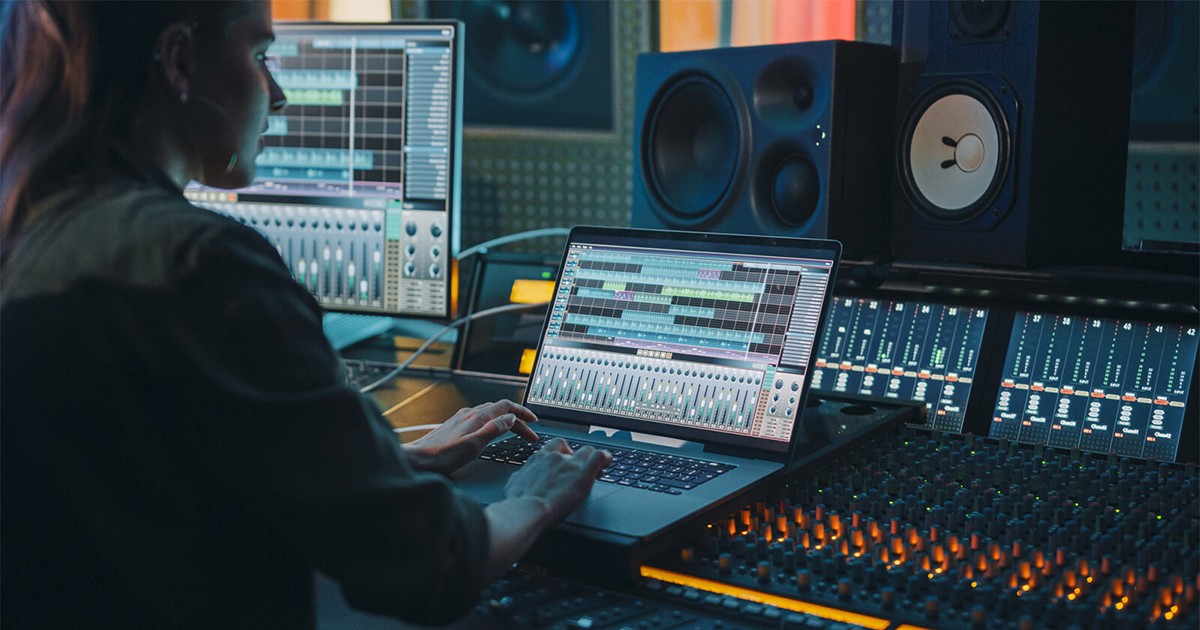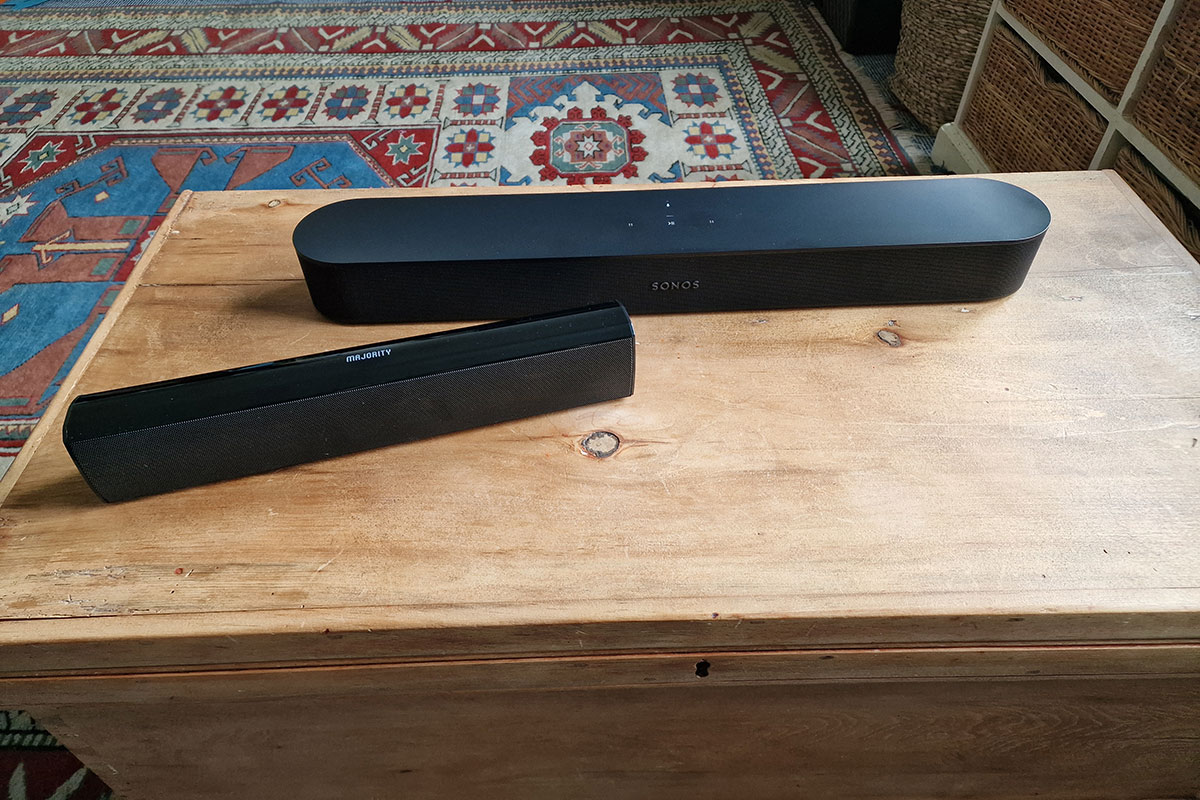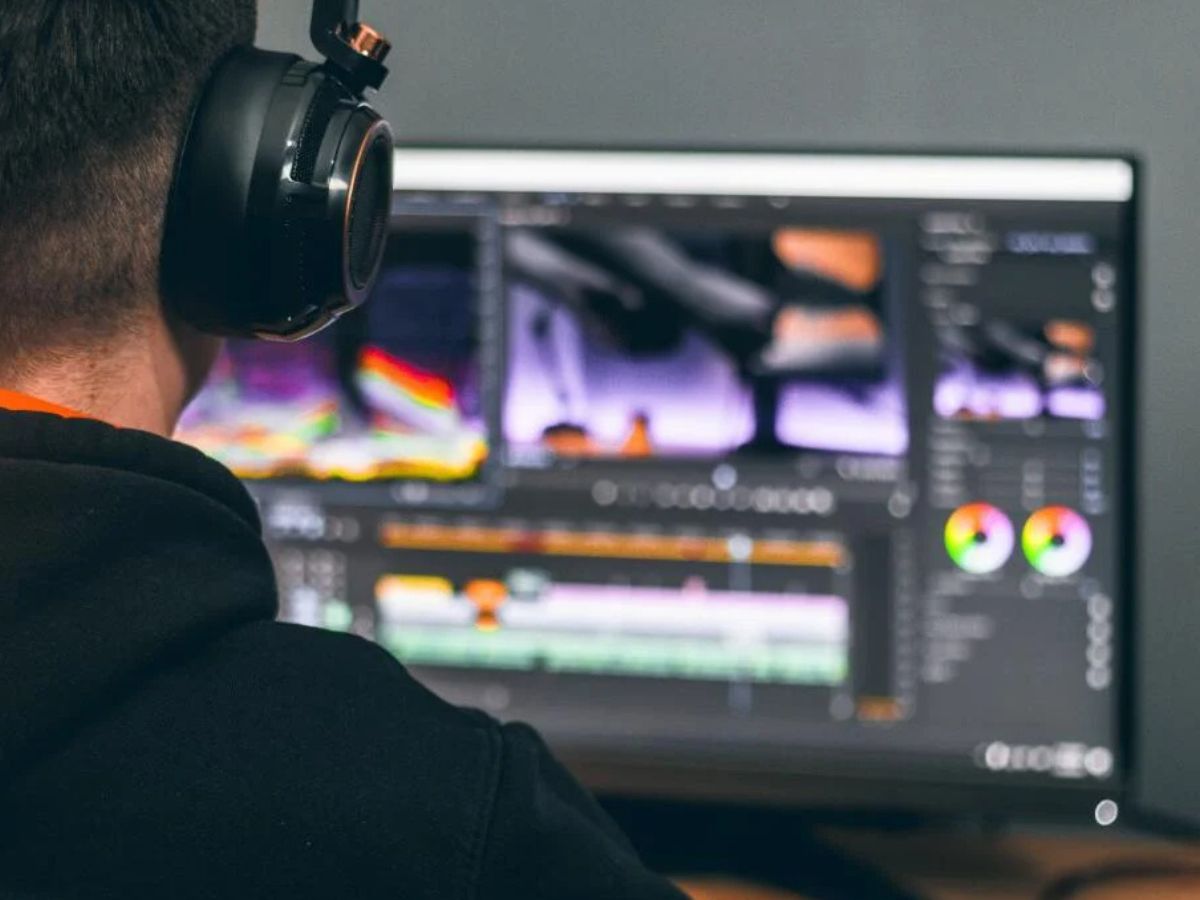Home>Production & Technology>Sound Effects>Why Do I Have To Pay For Sound Effects


Sound Effects
Why Do I Have To Pay For Sound Effects
Modified: January 22, 2024
Discover why you have to pay for sound effects, and how they enhance your projects. Find high-quality sound effects for your next project.
(Many of the links in this article redirect to a specific reviewed product. Your purchase of these products through affiliate links helps to generate commission for AudioLover.com, at no extra cost. Learn more)
Table of Contents
- Introduction
- Understanding the Value of Sound Effects
- Licensing and Copyright Issues
- The Role of Sound Designers
- The Cost of Developing Sound Effects Libraries
- Financial Support for Sound Effect Creation
- The Importance of High-Quality Sound Effects
- Accessing and Purchasing Sound Effects
- Alternative Options for Obtaining Sound Effects
- Conclusion
Introduction
Sound effects play a vital role in enhancing the audiovisual experience of various media forms, such as movies, TV shows, video games, and even podcasts. They add depth, realism, and emotional impact to the content, making it more engaging for the audience. However, you may have noticed that obtaining high-quality sound effects often comes at a cost. In this article, we will explore why you have to pay for sound effects and delve into the factors that contribute to their value.
Sound effects are meticulously crafted audio elements that are designed to evoke specific emotions, set the mood, and create a sense of realism in a given scene. From the subtle creak of a door opening to the thundering explosion of a rocket launch, sound effects add a layer of immersion that can transport the audience into the world of the story. The intricate process of creating sound effects involves recording, editing, and manipulating various sounds, both real and synthesized, to achieve the desired effect.
One of the main reasons why sound effects are not freely available is the issue of licensing and copyright. Sound designers and audio engineers invest their time, expertise, and resources in creating unique and original sound effects. As a result, they deserve to be compensated for their work and creativity. Licensing ensures that the sound effects are used legally and that the creators receive the recognition and financial support they deserve.
Another factor that contributes to the value and cost of sound effects is the extensive effort required to develop and maintain comprehensive sound effects libraries. These libraries consist of a vast collection of categorized and well-organized sound effects, covering a wide range of scenarios and environments. Building such libraries involves constant research, recording, editing, and categorizing of sounds, which requires a significant investment in equipment, software, and expertise.
Understanding the Value of Sound Effects
Sound effects are often underestimated in their importance and impact on the overall audiovisual experience. As mentioned earlier, they add depth, realism, and emotion to various media forms, making them more engaging and memorable for the audience. Let’s explore some key reasons why sound effects hold such value:
1. Enhancing Immersion: Sound effects have the power to transport the audience into the virtual world of a movie, video game, or any other form of media. For example, the sound of footsteps echoing through a dark corridor can create a sense of suspense and immerse the viewer deeper into the narrative. Whether it’s the chirping of birds in a serene forest or the chaotic sounds of a bustling city, sound effects help create a realistic environment for the audience to connect with.
2. Conveying Emotion: Sound effects play a crucial role in eliciting emotional responses from the audience. A well-timed, impactful sound effect can evoke fear, happiness, sadness, excitement, and a range of other emotions. The thunderous roar of a monster can send shivers down your spine, while the gentle rustling of leaves can evoke a sense of tranquility. These emotional triggers significantly enhance the storytelling experience and create a deeper connection between the audience and the content.
3. Adding Atmosphere: Sound effects contribute to the overall atmosphere and ambiance of a scene. From the distant sound of a howling wind to the buzzing of insects in a tropical rainforest, these elements create a sense of place and time. They help to establish the setting and generate a more immersive experience for the audience. Imagine watching a movie set in a bustling street without the sounds of traffic, footsteps, and chatter – it would certainly feel incomplete.
4. Providing Feedback and Clarity: Sound effects serve as important tools for providing feedback and enhancing clarity in media. For example, in video games, sound effects can indicate the success or failure of a player’s actions. The distinct sound of a bullet hitting a target or the satisfying “ping” of a successful combo can provide instant auditory feedback to the player. In films and TV shows, sound effects can emphasize actions, movement, and events, making it easier for the audience to follow the story and understand what is happening on screen.
5. Creating a Memorable Experience: Memorable sound effects have the potential to become iconic and forever associated with a particular scene or franchise. Think of the sound of a lightsaber igniting in the Star Wars movies or the iconic “Wilhelm scream” that has been used in countless films over the years. These sound effects become part of our cultural lexicon and instantly transport us back to those specific moments, evoking nostalgia and fond memories. Creating such memorable and distinctive sound effects requires skill, creativity, and a deep understanding of the emotional impact sound can have on the audience.
By understanding the immense value that sound effects bring to the table, we can appreciate the reasons behind their cost and the financial support required to sustain their creation and availability.
Licensing and Copyright Issues
When it comes to the availability of sound effects, licensing and copyright play a crucial role. Sound designers and creators invest significant time, effort, and resources in producing original and high-quality sound effects. As a result, they have the right to protect their intellectual property and ensure that their work is used appropriately and legally.
Sound effects, just like any other creative work, are subject to copyright laws. This means that the creators have the exclusive rights to control the distribution, reproduction, and public performance of their work. Licensing is the process through which these rights are granted to individuals or organizations who wish to use the sound effects.
When you purchase a sound effect, you are essentially acquiring a license to use it for a specific purpose, as defined in the licensing agreement. The terms of the license may vary depending on factors such as the scope of usage, duration, and territory. For example, a license may allow you to use the sound effect in a specific film project for a limited time, while another license may grant you unlimited use across multiple platforms.
By obtaining a license, you not only ensure that you are legally using the sound effects, but also support the work and creativity of the sound designers. The licensing fees contribute to the financial stability of these individuals or companies, enabling them to continue producing high-quality sound effects and expanding their libraries.
Furthermore, licensing helps protect against copyright infringement. Unauthorized use of sound effects without the proper license can lead to legal repercussions, including hefty fines and legal action. It is essential to respect the intellectual property rights of sound designers and obtain the necessary licenses to avoid any legal issues or damage to your reputation.
It is worth noting that there are different types of licenses available for sound effects. Some sound effect libraries offer royalty-free licenses, which allow unlimited use of the sound effects without additional fees per use. Other libraries may offer licenses with usage restrictions or charge additional fees for certain types of usage, such as broadcasting or commercial projects.
Always ensure that you carefully review the licensing terms and conditions before purchasing or using sound effects. This will help you understand the permitted usage and avoid any potential copyright infringement.
In summary, licensing is an essential aspect of obtaining sound effects. It ensures legal and ethical use while supporting the creators behind these valuable assets. By respecting copyright laws and acquiring the appropriate licenses, you contribute to the sustainability and growth of the sound design industry.
The Role of Sound Designers
Sound designers are the creative minds behind the development and implementation of sound effects. Their role extends beyond simply finding and selecting pre-recorded sounds; they are responsible for crafting unique and captivating auditory experiences that elevate the overall quality of a production. Let’s explore some key aspects of the role of sound designers:
1. Creating Sound Effects: Sound designers are skilled in the art of sound creation. They utilize a combination of techniques, such as recording, editing, and manipulating sounds, to craft original and customized sound effects. Through their expertise, they can bring imagination to life by creating sounds that don’t exist in the natural world or by molding existing sounds into something new and exciting.
2. Enhancing Storytelling: Sound designers play a crucial role in enhancing the storytelling process. They collaborate closely with directors, producers, and other creative professionals to understand the vision and requirements of a project. By carefully selecting and manipulating sound effects, they help convey emotion, establish atmosphere, and strengthen the narrative. Whether it’s the haunting sound of a ghostly whisper or the thrilling roar of a racing car, sound designers add depth and meaning to a scene.
3. Recording and Editing: Sound designers often engage in field recording, capturing sounds from real-world environments or creating specific sounds in controlled settings. They possess technical proficiency in operating recording equipment and have a keen ear for capturing high-quality audio. In post-production, sound designers meticulously edit and manipulate the recorded sounds to achieve the desired effect. This may involve removing unwanted noise, adjusting levels, or applying various audio processing techniques.
4. Collaboration with Sound Engineers: Sound designers closely collaborate with sound engineers to ensure the seamless integration of sound effects into the overall audio mix. They work together to balance the levels, spatial positioning, and overall sonic quality of the sound effects. This collaboration helps create a cohesive and immersive sound experience for the audience.
5. Staying Updated with Technology: Sound designers need to stay abreast of the latest advancements in audio technology, software, and equipment. They continuously explore new tools and techniques that can enhance their sound design capabilities and improve efficiency. By taking advantage of cutting-edge technologies, sound designers can push creative boundaries and deliver innovative and impactful sound effects.
6. Problem-Solving and Adaptability: Sound designers often face unique challenges during the sound design process. From recreating sounds that are difficult to capture to adapting sound effects to fit specific artistic requirements, problem-solving skills and adaptability are essential. Sound designers must be able to find creative solutions and think outside the box to achieve the desired results.
Overall, sound designers play a crucial role in shaping the auditory experience of various media forms. Through their creativity, technical expertise, and collaboration with other professionals, they bring sound to life and elevate the overall quality of the production.
The Cost of Developing Sound Effects Libraries
Building and maintaining comprehensive sound effects libraries involve significant investment in terms of time, expertise, and resources. From research and recording to editing and categorizing, let’s explore the various factors that contribute to the cost of developing sound effects libraries:
1. Research and Planning: Developing a sound effects library starts with extensive research to understand the specific needs and demands of the target audience. Sound designers need to identify popular and relevant sound categories, trends, and new emerging needs. This research helps in planning the scope and direction of the library, ensuring that it meets the requirements of the industry and the users.
2. Recording Equipment and Facilities: High-quality sound effects require professional-grade recording equipment such as microphones, field recorders, and studio setups. These tools ensure that the sound is captured accurately and with optimal clarity. Acquiring and maintaining this equipment can be a significant cost for sound designers and libraries. Additionally, dedicated recording facilities may also be required for specialized sounds or to create controlled recording environments.
3. Sound Editing and Processing Tools: Sound designers rely on powerful editing and processing software to manipulate and fine-tune the recorded sounds. This software often comes with a price tag, and regular updates are required to stay up-to-date with the latest features and improvements. Investing in these tools is essential to ensure the ability to edit, enhance, and customize the sound effects according to the specific needs of the users.
4. Sound Design Expertise: Creating high-quality sound effects requires a specialized skill set and expertise in sound design. Sound designers spend years honing their craft, developing a deep understanding of how sound interacts with various mediums and how to evoke specific emotions through auditory stimuli. The investment in training, education, and continuous professional development adds to the overall cost of developing sound effects libraries.
5. Recording and Editing Time: Building a comprehensive sound effects library involves countless hours spent on recording, editing, and perfecting each individual sound effect. This time investment is necessary to ensure that the library contains a variety of high-quality options for different scenarios and environments. The attention to detail and dedication to delivering the best possible sound effects require significant time and effort.
6. Categorization and Metadata: To make sound effects libraries user-friendly and easily searchable, sound designers spend time categorizing and adding metadata to each sound file. This involves organizing the sound effects into logical categories, adding relevant keywords, and providing detailed descriptions. The meticulous categorization and metadata process help users quickly find the specific sound effect they are looking for and ensure efficient workflow.
7. Storage and Distribution: As sound libraries grow in size, the cost of storage and distribution becomes a factor. Sound designers need to invest in reliable and secure storage solutions to ensure that the library remains accessible and protected. Additionally, the cost of distribution, whether through physical media or digital platforms, needs to be considered to make the sound effects available to users in a convenient and efficient manner.
Given the significant investment involved in developing sound effects libraries, the cost associated with accessing and using these libraries is understandable. It is essential to recognize the value that sound designers bring to the table and support their work through licensing and fair compensation. This ensures the continued growth and availability of high-quality sound effects libraries for the benefit of content creators and audiences alike.
Financial Support for Sound Effect Creation
The creation of high-quality sound effects requires significant financial support to ensure the sustainability and growth of the industry. Sound designers and creators invest their time, expertise, and resources into crafting unique and impactful audio elements. Let’s explore some of the ways in which financial support is crucial for sound effect creation:
1. Equipment and Technology: Sound designers heavily rely on professional-grade equipment and software to record, edit, and manipulate sound effects. This includes microphones, field recorders, studio setups, and advanced editing and processing tools. These investments are necessary to ensure the production of high-quality sound effects and meet the industry standards.
2. Research and Development: Sound designers dedicate time and effort to researching and staying updated with industry trends, technological advancements, and emerging sound design techniques. This ongoing research and development help them create innovative and relevant sound effects that meet the evolving needs of content creators and audiences.
3. Sound Libraries and Samples: Sound designers often rely on pre-existing sound libraries and samples as a foundation for their work. These libraries may come at a cost, especially when licensing is involved. By investing in licensed sound libraries, sound designers gain access to a wider range of high-quality sounds that can be used as building blocks or inspiration for crafting unique and customized sound effects.
4. Field Recording and Foley: Certain sound effects require specific recordings or foley work to accurately capture and simulate real-world sounds. This may involve renting or purchasing props, creating controlled recording environments, and investing in field recording expeditions. Financial support is necessary to cover these costs and ensure the authenticity and realism of the resulting sound effects.
5. Collaboration and Networking: Collaboration with other professionals in the industry, such as sound engineers, composers, and voice actors, is crucial in the creation of sound effects. Financial support allows sound designers to network, collaborate, and compensate these individuals for their contribution to the final product. These collaborations help elevate the quality and creativity of the sound effects and foster a sense of community within the industry.
6. Compensation for Creativity: Sound designers, like any other creative professionals, deserve to be compensated for their creativity, expertise, and hard work. Financial support ensures that their efforts are recognized and incentivized, enabling them to sustain their careers and continue producing high-quality sound effects. Fair compensation encourages sound designers to push creative boundaries, invest in professional development, and maintain the motivation to deliver exceptional audio experiences.
7. Marketing and Promotion: Sound designers often invest in marketing and promotion to showcase their work, reach a wider audience, and attract potential clients or licensing opportunities. This may involve creating demo reels, attending industry events, and utilizing online platforms for distribution and exposure. Financial support helps cover these marketing expenses and increases the visibility and accessibility of the sound effects created by sound designers.
In summary, financial support for sound effect creation is essential to ensure the availability of high-quality audio assets. By recognizing the value of sound designers’ work and providing the necessary resources, we can foster a vibrant and sustainable sound design industry that continues to enhance the audiovisual experiences of various media forms.
The Importance of High-Quality Sound Effects
High-quality sound effects are a vital component of any audiovisual production. They play a pivotal role in enhancing the immersion, emotional impact, and overall quality of the content. Here are some key reasons why high-quality sound effects are of utmost importance:
1. Immersion and Realism: High-quality sound effects help create a sense of immersion, drawing the audience into the world of the narrative. Whether it’s the roaring of a lion in the African savannah or the clinking of glasses in a bustling bar, realistic and authentic sound effects bring scenes to life, making the audience feel like they are a part of the story. They add depth, dimension, and a level of realism that enhances the audience’s engagement and enjoyment.
2. Emotional Impact: Sound effects have the power to evoke emotions and enhance the emotional impact of a scene. The right sound effect at the right moment can elicit fear, excitement, anticipation, joy, or sadness. A thunderous explosion, a creaking door, or a tender musical score can heighten the emotional response of the audience, intensify the storytelling, and create a memorable experience.
3. Setting the Mood and Atmosphere: Sound effects are instrumental in setting the mood and atmosphere of a scene or environment. The soundscape of a rainforest with chirping birds and rustling leaves evokes a serene and peaceful mood, while the howling winds and eerie whispers in a haunted house create a sense of tension and suspense. Well-crafted sound effects establish the ambiance and contribute to the overall tone and atmosphere of the production.
4. Enhancing Communication and Clarity: Sound effects serve as important storytelling tools, providing auditory cues and enhancing communication. They can help emphasize actions, movements, and events, making it easier for the audience to follow the story and understand what is happening on screen. Whether it’s the sound of footsteps approaching or the screeching tires of a car chase, high-quality sound effects bring clarity and enhance the overall coherence of the audiovisual experience.
5. Fostering Creativity and Originality: High-quality sound effects inspire creativity and originality in the creative process. They can spark new ideas, enhance the uniqueness of a production, and offer innovative approaches to storytelling. Sound designers can use their expertise and creativity to craft sound effects that are fresh, distinctive, and tailored to the specific needs and vision of the project. This creativity and originality contribute to the overall artistic value and differentiation of the content.
6. Professionalism and Reputation: Incorporating high-quality sound effects demonstrates professionalism and a commitment to delivering a polished final product. Audiences appreciate and recognize the effort and attention to detail put into creating a seamless and immersive audio experience. Consistently utilizing high-quality sound effects can help establish a positive reputation for the production team, enhancing their credibility and attracting more opportunities for future projects.
High-quality sound effects greatly enhance the audiovisual experience, captivate audiences, and elevate the overall quality of a production. They are essential tools that convey emotions, set the mood, and immerse viewers in the world of the story. By investing in high-quality sound effects, content creators ensure that their work is engaging, memorable, and emotionally resonant.
Accessing and Purchasing Sound Effects
Accessing and purchasing sound effects has become more convenient and efficient with the advent of digital platforms and specialized sound effect libraries. Here are some common ways to access and purchase sound effects:
1. Sound Libraries and Marketplaces: There are numerous online sound effect libraries and marketplaces that offer a wide range of sound effects for various creative projects. These platforms provide a vast selection of sound effects that are categorized, searchable, and easily accessible. Users can browse through different categories, preview the sounds, and select the ones that best fit their needs. Popular sound libraries and marketplaces include websites like Soundly, Epidemic Sound, and AudioJungle. These platforms often offer both free and premium sound effects, allowing users to choose based on their budget and project requirements.
2. Licensing Models: When purchasing sound effects, it’s important to consider the licensing model associated with the library or marketplace. Some sound effect libraries offer royalty-free licensing, where a one-time purchase grants users the right to use the sound effects in their projects without additional fees per usage. Other libraries may offer licensing based on specific usage or project requirements, such as commercial projects or broadcasting. It’s essential to carefully review the licensing terms and select the appropriate license based on your project’s needs.
3. Individual Sound Designers: Some sound designers offer their own websites or platforms where they sell their custom-made sound effects. These individual designers often specialize in specific genres or styles of sound effects, allowing users to find unique and tailored options for their projects. Engaging directly with sound designers can provide a more personalized experience, and they may be open to customization or creating bespoke sound effects based on specific project requirements.
4. Subscription Services: Another option for accessing sound effects is through subscription-based services. These services offer a library of sound effects that can be accessed by paying a recurring fee. Users have unlimited access to the entire catalog during the subscription period and can download and use the sound effects in their projects. Subscription services provide flexibility and a cost-effective solution for users who require a constant supply of sound effects for multiple projects over time.
5. Free Resources: In addition to paid options, there are also sources for free sound effects available online. These resources typically offer a limited selection of sound effects but can still be valuable for smaller projects or those on a tight budget. It’s important, however, to ensure that the free sound effects are properly licensed and crediting the original creator is necessary as per the licensing requirements.
Regardless of the method chosen, it’s crucial to select high-quality sound effects that meet the requirements and artistic vision of the project. Paying attention to the file formats, sample rates, and bit depths ensures compatibility and optimal integration with the production workflow. Moreover, by supporting sound designers, libraries, and marketplaces, users contribute to the growth and development of the sound design community and facilitate the creation of more exceptional sound effects in the future.
Alternative Options for Obtaining Sound Effects
While purchasing sound effects from libraries and marketplaces is a common approach, there are also alternative options for obtaining the sound effects you need. These alternatives offer flexibility and potential cost savings, depending on the project’s requirements and available resources. Here are some alternative options to consider:
1. DIY (Do-It-Yourself) Sound Effects: Creating your own sound effects can be a rewarding and cost-effective alternative. With a little creativity and some basic equipment, you can capture unique sounds specific to your project. By using everyday objects, experimenting with different recording techniques, and utilizing audio manipulation tools, you can produce custom sound effects tailored to your needs. For example, a simple thud sound effect can be created by dropping various objects on different surfaces and recording the impact.
2. Field Recording: If your project requires specific location-based sound effects, going out and recording them yourself can add an authentic touch. By using a portable recorder, you can capture sounds from nature, urban environments, or any other desired setting. Field recording allows for greater control over the sounds you capture, ensuring they meet your project’s specific requirements. Just be mindful of any legal restrictions or permissions that may be necessary for recording in certain locations.
3. Sound Effect Communities: Online communities dedicated to sound design and sharing sound effects can be a valuable resource for finding and obtaining unique sounds. These communities often consist of sound designers, field recordists, and enthusiasts who share their creations and experiences. By joining these communities, you can access a wide variety of user-generated sound effects, often available for free or at minimal cost. These sounds can be a great starting point, especially for indie projects or smaller productions with limited budgets.
4. Collaboration and Sound Libraries Exchange: Collaborating with fellow sound designers or industry professionals can open up opportunities for sound exchange. Through collaborations, you can exchange or trade sound effects, sharing resources and expanding your sound library without additional expenses. This collaborative approach fosters a sense of community and mutual support within the sound design industry, allowing for a wider range of sound options for everyone involved.
5. Public Domain and Creative Commons: Public domain and Creative Commons resources offer a wealth of sound effects that can be used freely or with certain permissions and attributions. Public domain sound effects are not protected by copyright and can be used without restrictions, while Creative Commons licenses allow for various levels of usage depending on the specific license terms. These resources can be found in online archives and platforms that curate and provide access to sound effects with open usage permissions.
When opting for alternative options, it’s important to consider the specific requirements of your project and assess the quality and legality of the sound effects. While these alternatives offer flexibility and potential cost savings, they may require more time and effort for sourcing, capturing, or editing the sound effects. Additionally, keep in mind the importance of maintaining a consistent and professional sound design that matches the overall production values of your project.
Overall, exploring alternative options for obtaining sound effects can provide a customized and unique audio experience while offering potential cost savings. Whether it’s DIY approaches, collaboration, or leveraging open resources, these alternatives can foster creativity, resourcefulness, and a sense of community within the sound design industry.
Conclusion
Sound effects are an integral part of the audiovisual experience, providing depth, immersion, and emotional impact to various media forms. While the availability of high-quality sound effects often comes at a cost, it’s important to understand and appreciate the reasons behind it. Licensing and copyright issues ensure that sound designers receive proper recognition and compensation for their creative work. The cost of developing sound effects libraries reflects the investment in equipment, expertise, and meticulous categorization and metadata. Financial support plays a crucial role in sustaining the creation of sound effects, covering expenses related to equipment, research, and collaboration.
High-quality sound effects hold immense value in enhancing immersion, conveying emotion, setting the mood, and improving communication and clarity in audiovisual productions. They foster creativity, evoke emotional responses, and contribute to a memorable and immersive viewer experience. Accessing and purchasing sound effects can be done through specialized libraries, marketplaces, or by engaging with individual sound designers. Additionally, alternative options such as DIY sound effects, field recording, sound effect communities, collaboration, and open resources offer flexibility and potential cost savings.
In conclusion, sound effects are a vital component of the creative process, elevating the quality and impact of audiovisual productions. Obtaining high-quality sound effects supports the work of sound designers and ensures legal and ethical usage. By recognizing the value of sound effects and investing in their acquisition, content creators and audiences alike can reap the benefits of a more immersive and engaging audiovisual experience.











